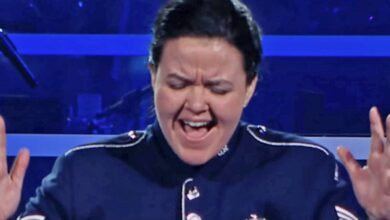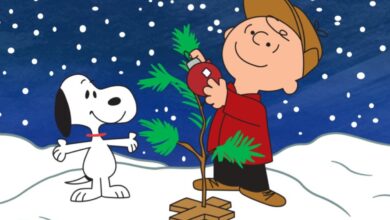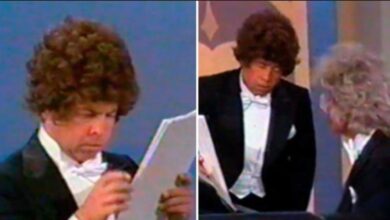Bee Gees’ ‘Run to Me’ Brings Heartfelt Harmony and Emotional Depth to Pop in 1972
Released in July 1972, the Bee Gees’ “Run to Me” marked a turning point in their artistic evolution. After several years of commercial uncertainty following their late-‘60s success, the group returned to form with this tender ballad, which climbed to No. 9 on the UK Singles Chart and reached No. 16 on the Billboard Hot 100 in the United States. The song showcased the trio’s mastery of melody and harmony while gently pivoting their sound toward the emotionally resonant pop that would define their later work. It wasn’t just a hit—it was a reaffirmation of their place in the ever-changing landscape of popular music.
By 1972, the Bee Gees—brothers Barry, Robin, and Maurice Gibb—had already weathered a lifetime of music industry ups and downs. Born on the Isle of Man and raised in Manchester before moving to Australia, they gained fame in the mid-1960s with their Beatlesque pop hits like “New York Mining Disaster 1941” and “To Love Somebody.” But internal tensions, shifting tastes, and lineup changes led to a brief period of decline. “Run to Me” emerged as a reconciliation—both musically and emotionally—between the brothers, signaling a creative renewal that would soon blossom into their global dominance later in the decade.
The song was written collaboratively by all three Gibb brothers, with Barry and Robin trading lead vocals—a format that highlighted their distinct vocal personalities while showcasing their shared emotional sensibility. “Run to Me” was conceived as a comforting message from one soul to another, offering solace during heartache. The lyrics, built around a simple but powerful refrain, “Run to me whenever you’re lonely,” emphasized themes of unconditional love and support. In an era defined by both social unrest and deeply personal songwriting, the Bee Gees struck a balance that felt sincere and timeless.
Recorded at IBC Studios in London, “Run to Me” was produced by the Bee Gees alongside long-time collaborator Robert Stigwood. The arrangement is lush but restrained, with a warm orchestral backdrop that supports rather than overwhelms the song’s intimacy. Barry’s soft, yearning verses give way to Robin’s expressive chorus, creating a call-and-response dynamic that mimics the emotional support described in the lyrics. Maurice, ever the musical glue of the group, added understated piano and harmony layers that brought cohesion and richness to the track.
Critics welcomed “Run to Me” as a return to the Bee Gees’ core strengths: tight harmonies, emotive melodies, and lyrical sincerity. It spent several weeks climbing the charts on both sides of the Atlantic and reestablished the group as a vital presence in the early ‘70s music scene. For fans who had followed them since the psychedelic ‘60s, it was a rewarding reminder of the trio’s timeless musical chemistry. And for new listeners, it served as a gentle introduction to a more mature, introspective Bee Gees sound.
Culturally, the song resonated with a public craving emotional connection. The early 1970s were marked by post-Beatles introspection in pop music, and “Run to Me” fit squarely in that lineage. Its message of safe harbor and open-heartedness echoed the sentiments of a generation navigating uncertain times. The Bee Gees’ ability to craft a universal sentiment without veering into cliché became one of their enduring hallmarks, and this song was one of its earliest, clearest examples.
Artistically, “Run to Me” helped reorient the Bee Gees’ career trajectory. While it didn’t foreshadow the disco explosion they would soon lead, it laid the emotional groundwork for their reinvention. It proved that they didn’t need to rely on trend-chasing or production gimmicks to reach listeners—they could do it with their voices, their writing, and their familial connection. It also gave the group renewed confidence to experiment further, eventually leading them to explore new sounds and take bigger creative risks.
The influence of “Run to Me” can be heard in the works of artists who embraced heartfelt balladry with a soft-rock sensibility. It stood as a precursor to the adult contemporary wave of the late ‘70s and early ‘80s, paving the way for acts like Air Supply, Christopher Cross, and even Lionel Richie. The Bee Gees’ ability to merge pop clarity with emotional nuance influenced a generation of singer-songwriters and harmony-driven groups alike.
Over the years, “Run to Me” has been covered by various artists, including Dionne Warwick in 1985, who brought a more gospel-infused feel to the track. Though none matched the original’s quiet charm, the covers kept the song alive across decades and genres. Even Barry Gibb himself revisited the song in later years during his solo performances, always treating it with a special reverence that spoke to its place in the Bee Gees’ journey.
At the time of the song’s release, the Bee Gees were recovering from a period of internal friction and professional uncertainty. “Run to Me” was a healing moment, both within the group and with their audience. It allowed them to rebuild trust—not only with each other but with fans who had followed their ups and downs. It was a song that didn’t demand attention, but quietly earned it.
Today, “Run to Me” remains a gem in the Bee Gees’ vast discography. Though overshadowed by the glittering disco hits that would later define their fame, it continues to enjoy airplay on soft rock and oldies stations. It’s the kind of song people remember fondly when they hear it by surprise—a gentle tug on the heart, a reminder of how simplicity and sincerity can still move mountains.
More than just a transitional single, “Run to Me” solidified the Bee Gees as enduring songwriters. It showed they could adapt without losing themselves, and that emotional honesty was their most powerful tool. Its structure—minimalist, melodic, and built on vocal interplay—became a template for many of their future ballads.
In the long arc of the Bee Gees’ career, “Run to Me” stands as a moment of quiet strength. It may not have been their loudest hit, but it was one of their most emotionally resonant. And in a catalog filled with iconic tracks, that’s saying something. In the soft glow of its melody, the Bee Gees reminded the world that sometimes, the most powerful music is the kind that simply tells someone, “I’m here.”





